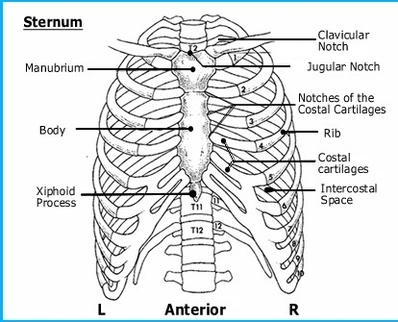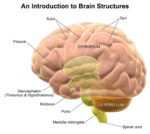Human Chest Bones Anatomy
The human chest, also known as the thorax, is a marvel of biological engineering. It provides a protective cage for vital organs while allowing flexibility and movement. The chest consists of 25 bones that together form the thorax.
ternum
The sternum, or breastbone, is a flat bone located in the middle of the chest. It has three parts: the manubrium, body, and xiphoid process. The sternum’s primary function is to protect the heart. It serves as the attachment point for the costal cartilage, which connects it directly to the first seven pairs of ribs. The sternum is also where the shoulder or pectoral girdle joins with the axial skeleton via an articulation with the clavicles.
Ribs
The rib cage consists of 12 pairs of ribs, totaling 24. These ribs curve around the chest cavity, forming a protective cage for the lungs, heart, and liver. The ribs extend from the spinal cord in the back, where they form joints with the thoracic vertebrae. The rib cage is also the attachment point for essential muscles like the diaphragm and intercostal muscles.
The ribs connect to the costal cartilage in the front of the body. This hard cartilage extends from the end of each rib and connects to the sternum. However, the bottom three ribs do not connect to the costal cartilage. They remain free and are referred to as ‘floating ribs’. This allows humans to bend at the waist without the ribs interfering with the pelvis.
Clavicle and Scapula
The clavicle, or collarbone, extends across the front of the shoulder from the sternum to the scapula, or shoulder blade. It is frequently fractured in automobile accidents and sports injuries.
The scapula, or shoulder blade, is a flat triangular bone located in the back of the shoulder. It connects with the collarbone in the front of the body. It is also connected to the shoulder joint, which brings together the shoulder blade and the humerus, or the large bone of the upper arm.
pine
The spine, or vertebral column, is a very important part of the human body. Running from the brain to the tailbone, the spine is a nerve center enclosed in a series of 24 connected bones called vertebrae. Each bone is cushioned with a disc made of cartilage that acts as a joint and ligament to keep the vertebrae connected.
Conclusion
The chest bones play a crucial role in protecting vital organs, providing structural support for the body, and facilitating movement. Understanding their anatomy and function is fundamental to appreciating the complexity and elegance of human body design..



